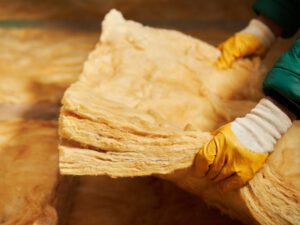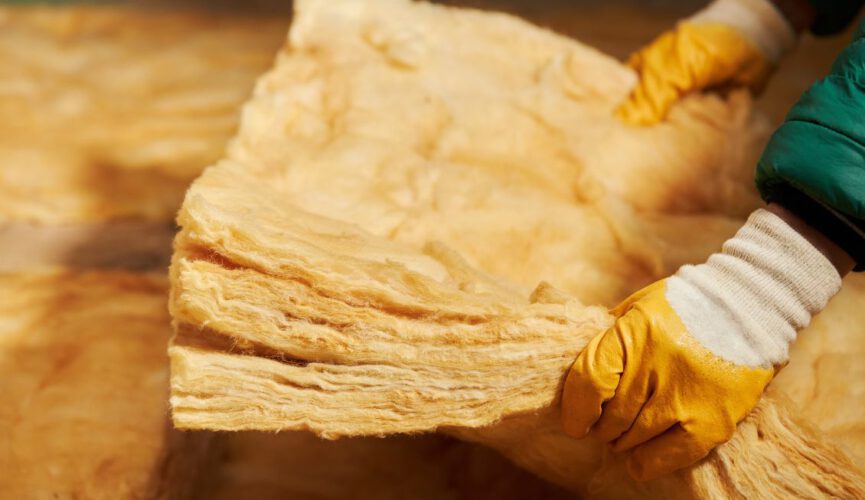Insulation removal is a messy job, best left to professionals. Old insulation can lead to mold and rodent infestation. It can also contaminate the indoor air with dangerous substances.
Perth Insulation Remover helps you improve your home comfort and energy efficiency. It also removes health hazards like dust, allergens, and pollutants.

Insulation is an important part of a home. It keeps heat in during the winter and out in the summer and can greatly affect energy efficiency. However, if the insulation is old and damaged, it may need to be removed and replaced. In this case, it is essential to follow proper safety protocols while removing insulation to avoid health risks and structural damage.
Before beginning the insulation removal process, clear the work area of any objects that could impede your progress. It is also a good idea to cover furniture or move it away from the workspace to prevent the fiberglass particles from contaminating it. Additionally, you should create a space for disposing of the insulation when it is finished. This will help to prevent the spread of contaminated materials around the workplace and the surrounding area.
It is also important to wear the right clothing while removing insulation from a house. This includes rubber-coated gloves, a respirator or surgical mask, and reliable goggles with an anti-fog coating. A full-body jumpsuit is also a great option to be more comfortable and protect yourself from dust and other contaminants.
In addition, it is important to inspect the insulation for signs of moisture or insect infestation. Moisture can lead to mold outbreaks and pest infestation, while insect nests can damage the structure of a home. In addition, the presence of these bugs can lead to an increase in heating and cooling costs.
Insulation removal can be a complex process that requires specialized equipment and training. If you are unsure of how to remove insulation safely, it is recommended that you hire a professional to do so for you. This will ensure the job is completed correctly and by applicable health, safety, and environmental regulations.
Proper insulation can greatly reduce the risk of corrosion under insulation (CUI) by reducing exposure to the chemicals released during spray foam application. This can significantly reduce long-term CUI risks and associated production losses, HSE incidents, and repair costs.
Insulation is an essential component of a comfortable, energy-efficient home or commercial building. Over time, however, insulation may require removal and replacement. When this is the case, the procedure must be handled properly to ensure safety and comply with health and environmental regulations.
Several reasons make insulation removal necessary, including mold or mildew growth, pest infestation, and poor performance. In addition, some older homes contain insulation materials that are dangerous to human health, such as asbestos and vermiculite. In these cases, contaminated insulation should be removed immediately to prevent ill effects and improve indoor air quality.
One of the most important health benefits of insulation removal is the elimination of allergens and other contaminants. Typical fiberglass and cellulose insulation retain allergens like dust, pollen, and pet dander, which can be inhaled into the respiratory system. This can lead to allergies, sneezing, and itching in the eyes, nose, throat, and mucous membranes. Black mold exposure can also cause severe symptoms like rashes, chronic coughing, fatigue, and other health problems.
Over time, insulating materials can shift from their original distribution in the attic. This often happens when home service providers work in the attic to repair or upgrade ductwork, lighting, HVAC, wiring, and other features. Additionally, rodents like mice, squirrels, raccoons, and opossums can create their nests in the attic and stomp down different insulation parts. When this occurs, the insulating material becomes uneven and causes drafts throughout the house.
When it comes to contaminated insulation, the removal process is best left to professionals. The right personal protective equipment must be used, including rubber-coated gloves, a respirator or surgical mask, and reliable goggles. In some cases, a full-body jumpsuit might be needed when manually removing insulation from attics. For loose-fill insulation, such as blown cellulose or fiberglass insulation, it is most appropriate to use a vacuum system to remove the material safely. In this way, it is possible to prevent contamination of the surrounding areas and limit the spread of contaminants.
Insulation is a vital component in keeping homes and businesses comfortable and energy efficient. However, insulation can become damaged due to a variety of factors over time, including pest infestation, water damage, and normal wear and tear. In such cases, it is important to remove and replace the insulation to avoid health risks and poor energy efficiency.
Insulation materials require a significant amount of energy and resources to produce. Additionally, many insulation products could be more environmentally friendly. For example, common insulation materials such as polystyrene (EPS) and XPS foam are made from unnatural substances that demand an alarming amount of energy to manufacture. They also contain HCFCs and other chemicals that contributing to ozone depletion and global warming. Additionally, they are often non-recyclable, which means that they continue to pollute the environment long after they are used up.
Many homeowners and business owners are becoming increasingly concerned about the environment and are seeking greener alternatives to conventional insulation. Some of the most sustainable options are cellulose and fiberglass insulation. Both have low environmental impacts and are made from recycled materials. In addition, they can provide several additional benefits to the environment, such as reduced water and air pollution.
When choosing environmentally friendly insulation, look for a material that uses closed production loops and has a low treatment requirement. These green materials are a great alternative to traditional insulation. The best choice is cellulose, which comprises up to 85% recycled materials. It also requires less energy to produce than other insulation materials and is made from consumer paper, which is tied to responsible forestry management and plant-based trees.
If your insulation is contaminated with mold or mildew, you should have it removed. These contaminants are a major health risk and can cause respiratory problems in people living in the house. Moreover, old insulation can be a home for rodent urine and feces. In addition, this can affect the odor and moisture levels in the house. Hence, removing and replacing old insulation is one of the best ways to improve indoor air quality.
The cost of insulation removal can vary based on several factors. These include the type of insulation, whether it is blown or batt, and how much is currently present. It is also important to consider any damage or infestation that may be present in the attic space. If the existing insulation is contaminated with rodent waste, for example, this can increase the cost of the removal process. Additionally, the location of the attic space can influence the cost. For example, an attic with difficult access or a complex layout can require additional labor to remove and clean the insulation.
Another factor that affects the cost of insulation removal is whether it will be done by hand or machine. Machine removal is generally cheaper than manual removal, as it takes less time and effort. However, if the attic space is large or contains a lot of debris, it may be more expensive to remove the insulation manually.
If the old insulation is contaminated, it will be necessary to remove and replace it. This can be costly but will ultimately improve the health and safety of your home. In addition, new energy-efficient insulation will provide you with long-term savings on your heating and cooling costs.
While it is possible to DIY insulation removal, the best option is to hire a professional to ensure the project is performed correctly and safely. An experienced professional can assess the condition of your attic and recommend the right type of insulation for your home. They can also recommend the best installation method.
In addition, the contractor can help you choose the right insulation to save money and reduce energy bills. It is also important to ask the contractor if they use environmentally friendly materials. This is especially important if you’re replacing fiberglass insulation, as it may contain harmful chemicals. If you’re looking for a more sustainable option, choose cellulose or green foam insulation. These types of insulation are more durable and less prone to moisture. They are also more affordable than traditional fiberglass insulation. If you’re on a tight budget, try to do some of the prep work yourself to cut down on labor costs.

